Micro-Dosing Social Exposure to Build Confidence
Introduction
For many people, social anxiety feels like a looming storm cloud. The thought of entering a crowded room, speaking up in meetings, or even making small talk at the grocery store can spark a rush of fear, sweaty palms, and racing thoughts. While some avoid these situations altogether, others push themselves into overwhelming exposures, only to feel drained or discouraged.
But what if there was a gentler, science-backed approach to gradually rewiring your brain to handle social situations with ease? Enter micro-dosing social exposure—a concept that borrows from the principles of exposure therapy but adapts them into small, manageable doses of real-world practice.
This technique doesn’t throw you into the deep end of social fear. Instead, it’s about dipping your toes in the water, one small step at a time, until confidence begins to grow naturally. This article explores how micro-dosing works, why it helps, and how you can start implementing it to build authentic confidence in your social life.
Looking for supplements for people with Social Anxiety? Click here.
🌱 Part 1: The Psychology Behind Micro-Dosing Social Exposure
At its core, micro-dosing social exposure is rooted in exposure therapy—a gold-standard treatment for anxiety disorders. The idea is simple: repeated, controlled exposure to a feared situation gradually reduces the anxiety response.
When you consistently face a situation that once felt threatening (in small, tolerable ways), your brain learns that:
- The fear isn’t as dangerous as it once seemed.
- You can survive and adapt to discomfort.
- Confidence builds through repeated mastery of small steps.
This process is also linked to neuroplasticity—your brain’s ability to reorganize itself. Every time you engage in a small social exposure without retreating, you’re strengthening neural pathways that associate social situations with safety rather than danger.
Think of it like exercise for your social muscles. You wouldn’t expect to lift 200 pounds on your first day at the gym. Instead, you’d start light, gradually building strength. The same applies to social confidence—micro-dosing gives you small, consistent “reps” of exposure until it feels natural.
💡 Part 2: Why Traditional “Flooding” Fails
Many people who struggle with social anxiety are told to “just put yourself out there” or “face your fears head-on.” While this advice has some truth, it often backfires.
Here’s why:
Overwhelming anxiety reinforces avoidance.
When you expose yourself to situations that are too intense, your nervous system goes into overdrive. Instead of learning safety, your brain learns that social events are even more terrifying.
Shame spiral.
If you attempt a large social challenge and freeze, stumble, or feel judged, you may internalize the failure and avoid trying again.
Burnout.
Flooding yourself with too much exposure too quickly can leave you exhausted and discouraged rather than empowered.
Micro-dosing is the antidote. It lowers the barrier to entry, ensuring progress feels safe, sustainable, and empowering.
🧩 Part 3: Breaking Down Social Fears Into Micro-Doses

The secret to micro-dosing exposure is breaking big fears into tiny, achievable steps. Let’s take an example:
Big Fear: Speaking up in a meeting.
Micro-dosed steps might include:
👀 Making eye contact with one coworker for a few seconds.
👋 Saying hello in the hallway.
💬 Asking one short question in a small group.
🗣️ Sharing one brief comment during a casual discussion.
📢 Voicing one point during a formal meeting.
Each step builds on the previous one, giving your nervous system a chance to adapt and recalibrate. Instead of avoiding social fears or rushing into the deep end, you create a ladder of exposures that gradually lead to genuine confidence.
Looking for online therapy for people with Social Anxiety? Click Here.
🔬 Part 4: The Science of Safety Signals
When you practice micro-dosed exposures, you’re essentially sending your brain safety signals. These are cues that tell your nervous system: “I am safe in this environment.”
Examples of safety signals include:
- Controlled breathing (exhaling longer than inhaling).
- Grounding techniques (feeling your feet on the floor, noticing your surroundings).
- Self-talk (“This is uncomfortable, but not dangerous”).
- Positive reinforcement (rewarding yourself after small wins).
Over time, your brain pairs these safety signals with social interactions, reducing anxiety and boosting confidence.
Want to try Breathwork? Click Here.
🛠️ Part 5: Practical Steps to Start Micro-Dosing Social Exposure
Here’s how you can begin your own journey:
Step 1: Identify Your Social Triggers
Write down the situations that make you anxious—whether it’s phone calls, group conversations, networking events, or even ordering coffee.
Step 2: Build a Hierarchy
Arrange these situations from least scary to most intimidating. This becomes your exposure ladder.
Example:
📝 Sending a short text message.
☎️ Making a brief phone call.
🗨️ Starting a 2-minute conversation with a stranger.
🧑🤝🧑 Attending a small group gathering.
🎤 Giving a presentation.
Step 3: Choose Micro-Doses
Pick the lowest item on your list and break it down even further. If making a phone call feels scary, your first micro-dose could be dialing the number without talking, just to desensitize your nervous system.
Step 4: Track Your Wins
Keep a journal of each attempt. Even if it feels small, celebrate it! These micro-victories add up over time.
Step 5: Repeat Until Boredom
The key to rewiring fear is repetition. Continue practicing each step until your anxiety decreases significantly. Then, move up the ladder.
🧘 Part 6: Pairing Micro-Doses With Nervous System Regulation
To maximize results, combine exposures with tools that calm your body:
Breathwork. Try box breathing (inhale 4, hold 4, exhale 4, hold 4).
Progressive muscle relaxation. Tense and release each muscle group before exposures.
Mindful presence. Notice your surroundings instead of focusing on anxious thoughts.
Movement. A short walk or stretch before exposures helps release excess tension.
By pairing micro-doses with calming practices, you train your nervous system to stay balanced under social pressure.
🎯 Part 7: Examples of Micro-Dosing in Real Life
Here are a few common fears and how to micro-dose them:
Fear: Talking to strangers
😀 Make eye contact with cashiers.
🙋 Say “thank you” when someone holds the door.
🗨️ Ask one simple question (e.g., “How’s your day?”).
💬 Build to a 2–3 minute conversation.
Fear: Public speaking
📹 Record yourself talking for 30 seconds.
🪞 Practice in front of a mirror.
👥 Share with a trusted friend.
🗣️ Speak up in a small meeting.
🎤 Graduate to a larger audience.
Fear: Networking events
🚶 Walk into the room and stay for 5 minutes.
🍷 Stand near a group without speaking.
👋 Introduce yourself to one person.
🧑🤝🧑 Add another conversation.
🗨️ Aim for three meaningful interactions.
🌍 Part 8: Social Micro-Dosing in the Digital Age
Micro-dosing doesn’t always require face-to-face interactions. In today’s digital world, you can practice socially online:
- Comment on a friend’s social media post.
- Send a supportive message to someone.
- Join an online group and contribute one sentence.
- Progress to longer posts or voice chats.
This digital practice can be a stepping stone toward real-world confidence.
🧠 Part 9: How Long Does It Take to See Results?
There’s no one-size-fits-all timeline, but most people notice progress within weeks if they practice consistently. The key is frequency over intensity.
Ten small exposures per week will build more confidence than one overwhelming exposure per month. Like training a muscle, consistency is everything.
🛡️ Part 10: Overcoming Common Roadblocks
Perfectionism.
You don’t need to “perform perfectly.” The goal is practice, not perfection.
Setbacks.
If one exposure goes poorly, don’t quit. See it as a rep that still strengthens your resilience.
Negative self-talk.
Replace “I embarrassed myself” with “I practiced being courageous today.”
🌟 Part 11: The Ripple Effect of Micro-Dosing Confidence

The beauty of micro-dosing social exposure is that progress in one area spills into others. For example:
- Confidence in ordering coffee may lead to confidence in chatting with coworkers.
- Comfort with small talk may make public speaking less intimidating.
- A few seconds of courage may unlock friendships, relationships, and career opportunities.
Confidence compounds. What starts as a few micro-doses can transform into a new self-image: someone capable, calm, and socially resilient.
Conclusion
Building social confidence isn’t about forcing yourself into terrifying situations or avoiding them altogether. It’s about taking small, intentional steps—micro-doses of exposure—that slowly rewire your brain to see social interactions as safe rather than threatening.
Over time, these small wins add up, creating a ripple effect that can transform how you see yourself and how you show up in the world.
So the next time you feel the weight of social anxiety, remember: you don’t have to climb the entire mountain at once. Just take the next small step. 🌱
Looking for online therapy for people with Social Anxiety? Click Here.
📚 Reference Section
American Psychological Association. (2017). Exposure therapy for anxiety disorders: Scientific foundations and clinical practice.
Clark, D. M., & Wells, A. (1995). A cognitive model of social phobia. Social Phobia: Diagnosis, Assessment, and Treatment.
Hofmann, S. G., & Smits, J. A. (2008). Cognitive-behavioral therapy for adult anxiety disorders: A meta-analysis of randomized placebo-controlled trials. Journal of Clinical Psychiatry.
Craske, M. G., Treanor, M., Conway, C. C., Zbozinek, T., & Vervliet, B. (2014). Maximizing exposure therapy: An inhibitory learning approach. Behaviour Research and Therapy.
National Institute of Mental Health. (2022). Social anxiety disorder: More than just shyness.
Related Posts
-

Supplements for Staying Present and Grounded
L-Theanine is nature’s calm focus enhancer 🍃. Derived from green tea, it promotes relaxation without drowsiness by balancing GABA, serotonin, and dopamine. Learn how this amino acid supports smooth focus, emotional balance, and mindful presence in daily life.
-
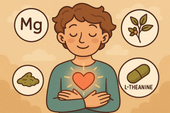
Supplements That Support Emotional Openness
Emotional openness starts in the body 🌿. When your nervous system feels safe, your heart can express freely. Learn how supplements like magnesium, Ashwagandha, and L-theanine support calm connection, balanced emotions, and the courage to stay authentically open.
-
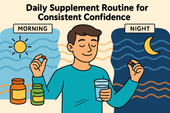
Daily Supplement Routine for Consistent Confidence
Confidence is built through rhythm, not luck 🌿. A daily supplement routine can help your energy, mood, and focus stay balanced from morning to night. Learn how adaptogens, magnesium, and B vitamins work together to create steady calm and lasting self-assurance.
-
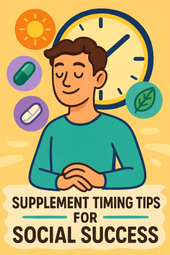
Supplement Timing Tips for Social Success
Social confidence has its own rhythm 🌿. When you time your supplements to match your body’s natural energy cycles, calm and focus align effortlessly. Learn how magnesium, L-theanine, and adaptogens can help you stay grounded, charismatic, and fully present at just the right moment.
-
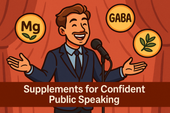
Supplements for Confident Public Speaking
Public speaking confidence begins with biology 🎤🌿. When your nervous system is calm and your neurotransmitters are balanced, your voice, focus, and presence flow naturally. Learn how supplements like magnesium, GABA, and adaptogens can align your body’s chemistry with the calm clarity you need to speak authentically.
-

Travel-Friendly Supplements for On-the-Go Confidence
Magnesium is the ultimate travel mineral for calm and balance ✈️🌿. It relaxes the nervous system, eases stress from jet lag or fatigue, and supports muscle and mental recovery. Discover how this essential nutrient keeps you centered, focused, and energized wherever your journey takes you.
-

Supplements for Confident Video Calls
Magnesium is the mineral that brings calm to both body and mind 🌿. It supports relaxation, better sleep, and a stable mood by regulating cortisol and soothing the nervous system. Learn how magnesium supplements can restore balance, reduce anxiety, and help you feel centered under stress.
-

Ashwagandha for Calming the Stress Response
Ashwagandha helps your body remember how to relax 🌿. As one of the most trusted adaptogens, it calms the stress response by lowering cortisol, soothing the nervous system, and restoring natural energy balance. Learn how this ancient herb promotes deeper sleep, emotional steadiness, and resilience in today’s high-stress world.
-

How GABA Supplements Can Help You Feel Grounded
GABA is the brain’s natural calm signal 🌿. When life feels overwhelming, this neurotransmitter helps quiet mental noise, relax muscles, and restore emotional balance. Learn how GABA supplements can calm the nervous system, reduce anxiety, and help you feel grounded in your body again.
-
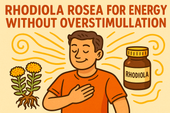
Rhodiola Rosea for Energy Without Overstimulation
Rhodiola rosea offers a rare kind of energy — one rooted in calm, not chaos 🌿. Known as the golden root, this adaptogen enhances endurance, focus, and mood by balancing cortisol and supporting the nervous system. Discover how Rhodiola restores natural vitality without the overstimulation of caffeine or stress-driven fatigue.
-
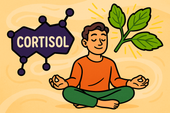
Holy Basil and Cortisol Control
Holy basil, or Tulsi, is one of nature’s most powerful adaptogens 🌿. Revered in Ayurvedic medicine for centuries, it helps balance cortisol, calm the mind, and protect the body from stress. Learn how holy basil restores hormonal harmony, supports energy, and promotes emotional resilience in a fast-paced world.
-
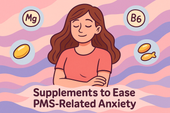
Supplements to Ease PMS-Related Anxiety
Hormones are the body’s messengers — guiding mood, energy, metabolism, and balance. 🌿 When these chemical signals flow in harmony, life feels stable and calm. Learn how nutrients, sleep, and stress management help keep hormonal communication clear, supporting emotional steadiness and overall vitality.
-
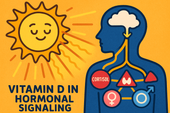
The Role of Vitamin D in Hormonal Signaling
Testosterone is more than a hormone — it’s a signal of strength, motivation, and vitality 💪. Learn how this key molecule shapes energy, mood, muscle growth, and focus in both men and women. Discover how nutrition, vitamin D, and minerals like zinc and magnesium support healthy testosterone signaling for balanced power and performance.
-
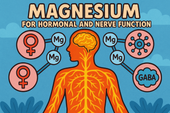
Magnesium for Hormonal and Nerve Function
Magnesium is the mineral that connects calm and vitality ⚡. It fuels nerve transmission, supports hormonal balance, and restores the body’s ability to relax under stress. Learn how magnesium strengthens communication between the nervous and endocrine systems, stabilizing cortisol, thyroid, and reproductive hormones for true equilibrium.
-

Zinc and Its Role in Hormonal Stability
Zinc is one of the body’s most powerful regulators ⚖️—a trace mineral that keeps hormones, metabolism, and energy in perfect rhythm. Learn how zinc supports testosterone, thyroid function, cortisol balance, and emotional stability while protecting against modern stress and deficiency. Discover why restoring zinc can help your body feel grounded, focused, and hormonally resilient.
-
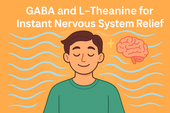
GABA and L-Theanine for Instant Nervous System Relief
When stress hits, your nervous system needs relief — not more stimulation 🌿. Discover how GABA and L-theanine work together to calm the body, quiet racing thoughts, and restore inner balance. Learn the science behind these natural compounds that ease tension, support emotional stability, and bring instant peace without sedation.
-
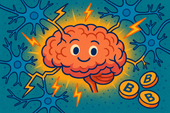
B-Vitamins for Faster Nerve Communication
Vitamin B1, or thiamine, is your brain’s ignition key 🔑—turning food into cellular energy and powering rapid nerve signaling. Discover how this essential nutrient fuels neurotransmitter activity, supports focus and coordination, and prevents fatigue or mental fog. Learn why maintaining optimal thiamine levels keeps your nerves firing fast and your mind sharp.
-

Supplements That Help You Stay Alert Without Anxiety
L-theanine is nature’s secret for calm focus and balanced energy 🌿. Found in green tea, this gentle amino acid promotes relaxation, supports alpha brain waves, and helps you stay alert without stress or grogginess. Discover how L-theanine can enhance focus, improve sleep quality, and restore mental calm in a fast-paced world.
-
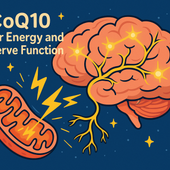
CoQ10 for Energy and Nerve Function
CoQ10 powers every cell in your body—from your heart to your brain ⚡. Learn how this essential compound fuels mitochondria, boosts nerve function, and protects your brain from oxidative stress. Discover how supplementing with CoQ10 can restore energy, sharpen focus, and support long-term neurological vitality.
-
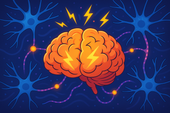
Supplements That Support Nerve Signaling for Mental Energy
Your brain’s electrical network depends on magnesium—one of the most vital minerals for nerve signaling, calm focus, and steady mental energy ⚡. Learn how this essential nutrient powers neurotransmission, supports relaxation, and helps protect your nervous system from stress overload—so your mind feels balanced, alert, and resilient every day.
-
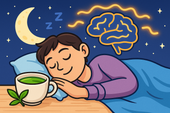
L-Theanine for Sleep Without Grogginess
L-theanine offers a natural path to better sleep—without the next-day fog. 🌙 Found in green tea, this gentle amino acid calms the mind, lowers stress hormones, and promotes deep relaxation without sedation. Learn how L-theanine balances your brainwaves, reduces nighttime anxiety, and helps you wake up refreshed, alert, and clear-minded.
-

Supplements to Support the Circadian Rhythm
Your body’s natural clock depends on more than just sunlight—it also relies on key nutrients to stay in sync. 🌞🌙 Discover the best supplements to support your circadian rhythm, from melatonin and magnesium for deep sleep to vitamin D and adaptogens for morning energy. Learn how to realign your internal clock for better rest, sharper focus, and stable mood every day.
-

Melatonin and Cortisol: The Night vs. Day Hormones
Melatonin and cortisol are your body’s night-and-day hormones—one helping you drift into deep sleep, the other powering your alertness each morning. 🌙☀️ Learn how these two forces work together to regulate your energy, mood, and recovery. Discover how modern stress, artificial light, and poor routines can throw them off balance—and how to naturally reset your rhythm for calm nights and focused days.
-

Supplements for Deeper Sleep and Nervous System Reset
Struggling to sleep even when you’re exhausted? 🌙 Discover how to reset your nervous system and achieve deeper, more restorative rest with the right blend of supplements, breathwork, and therapy. From magnesium and L-theanine to slow exhalations and somatic healing, this guide helps you rebuild your body’s natural rhythm of calm and recovery—so you can wake up truly renewed.
-
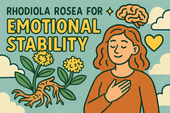
Rhodiola Rosea for Emotional Stability: Finding Balance Through Resilience
Stress is the body’s natural alarm system — useful in bursts, but draining when it never turns off. Learning to regulate it helps restore calm focus, emotional balance, and physical vitality. 🌿💫
-
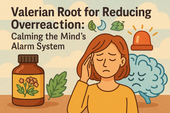
Valerian Root for Reducing Overreaction: Calming the Mind’s Alarm System
GABA is the brain’s natural brake pedal — calming overstimulation and helping you think clearly under stress. When balanced, it brings a sense of inner peace, emotional control, and focus. 🌿🧠💫
-

Supporting Adrenal Health for a Steadier Mood
Cortisol is the body’s built-in stress alarm — essential in short bursts but harmful when constantly elevated. Learning to balance it naturally restores calm, focus, and emotional stability. 🌿⚖️
-

Cold Showers and Adaptogens for a Reset: Reclaiming Energy, Calm, and Control
Adaptogens help the body adapt to stress, restoring calm energy and balance. These ancient herbs strengthen resilience, regulate mood, and support focus — helping you stay grounded through life’s ups and downs. 🌿💫
-
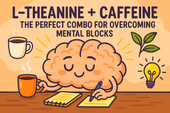
L-Theanine + Caffeine: The Perfect Combo for Overcoming Mental Blocks
Neurotransmitters are the brain’s messengers — tiny molecules that shape how we think, feel, and focus. When they’re in balance, we experience calm energy, clear thinking, and emotional harmony. 🌿🧠✨
-
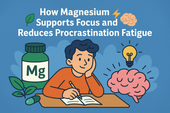
How Magnesium Supports Focus and Reduces Procrastination Fatigue
Magnesium is the quiet mineral behind mental clarity and steady focus. By calming the nervous system and restoring cellular energy, it helps transform fatigue and overthinking into calm, productive flow. 🌿⚡🧠
-

B Vitamins for Beating Procrastination and Boosting Energy
Procrastination isn’t just a mindset — it’s often a signal of low energy and nutrient depletion. B vitamins recharge the brain’s motivation circuits, boosting focus, clarity, and the drive to take action. 🌿⚡🧠
-
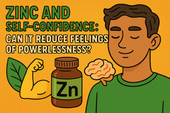
Zinc and Self-Confidence: Can It Reduce Feelings of Powerlessness?
Zinc isn’t just a mineral — it’s the foundation of emotional strength. By balancing neurotransmitters and calming the nervous system, it helps you feel more centered, assertive, and confident from the inside out. 🌿💪
-
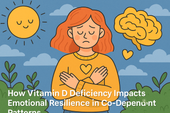
How Vitamin D Deficiency Impacts Emotional Resilience in Co-Dependent Patterns
Co-dependency is the emotional tug-of-war between connection and self-loss — a pattern born from giving too much and receiving too little. Learning to untangle this dynamic allows for real love rooted in balance, not fear. 🌿💛
-
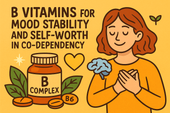
B Vitamins for Mood Stability and Self-Worth in Co-Dependency
Vitamin B1, or thiamine, powers both the body and the brain — fueling focus, energy, and emotional clarity. Supporting your nervous system with this essential nutrient helps restore calm and mental resilience. 🌿⚡🧠
-
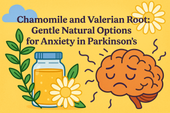
Chamomile and Valerian Root: Gentle Natural Options for Anxiety in Parkinson’s
Anxiety often feels like a storm inside the mind — racing thoughts, tightness, and unease that make it hard to focus or rest. But learning to understand and calm that inner storm opens the door to peace and emotional balance. 🌿🧠
-
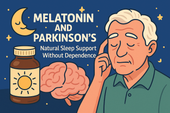
Melatonin and Parkinson’s: Natural Sleep Support Without Dependence
Melatonin is the body’s natural sleep hormone — guiding your mind into rest and your body into recovery. Supporting its natural rhythm can improve sleep quality, mood, and overall health without dependence. 🌙🧠
-
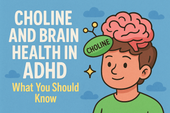
Choline and Brain Health in ADHD: What You Should Know
Inflammation can quietly affect both the body and mind, disrupting focus, mood, and energy. Understanding how it works — and how to calm it — is key to restoring balance, clarity, and long-term health. 🌿🧠
-
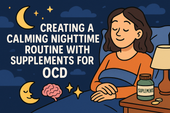
Creating a Calming Nighttime Routine with Supplements for OCD
Sleep is the brain’s nightly repair ritual — a time when emotional chaos settles and clarity returns. Prioritizing deep rest restores focus, calm, and resilience, helping both the body and mind recover naturally. 🌙🧠
-
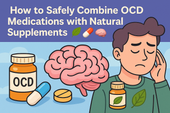
How to Safely Combine OCD Medications with Natural Supplements
Supplements bridge the gap between nutrition and mental wellness — supporting focus, calm, and energy from within. The right combination of nutrients can help balance mood, sharpen the mind, and restore long-term resilience. 🌿🧠
-
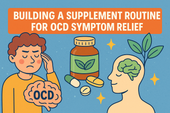
Building a Supplement Routine for OCD Symptom Relief
OCD can feel like being trapped in your own thoughts — a battle between control and chaos. Understanding the science behind these cycles is the first step toward breaking free and finding calm within the mind. 🌿🧠
-
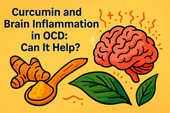
Curcumin and Brain Inflammation in OCD: Can It Help?
Inflammation doesn’t just affect the body — it can silently influence the brain, fueling anxiety, fatigue, and mental fog. By understanding how inflammation works, we can learn how to calm the nervous system and restore inner balance. 🌿🧠
-
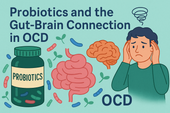
Probiotics and the Gut-Brain Connection in OCD
Serotonin, often called the “feel-good” chemical, shapes our mood, focus, and emotional balance. By keeping this neurotransmitter in harmony, we support calm thinking, better sleep, and greater mental resilience. 🌿🧠
-

B Vitamins and OCD: Supporting Energy and Neurotransmitter Balance
OCD isn’t just about habits — it’s about the brain’s struggle to find control in chaos. Understanding the neurological roots behind intrusive thoughts can help replace fear with clarity and guide healing toward calm awareness. 🌿🧠
-
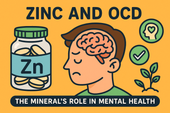
Zinc and OCD: The Mineral’s Role in Mental Health
Zinc is more than a trace mineral — it’s a key regulator of mood, memory, and emotional balance. By stabilizing neurotransmitters like serotonin and glutamate, zinc helps calm obsessive thought patterns and supports overall mental clarity. 🌿🧠
-
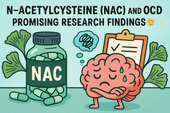
N-Acetylcysteine (NAC) and OCD: Promising Research Findings
Antioxidants act as the body’s natural defense system, neutralizing free radicals that damage brain cells and worsen anxiety or fatigue. Supporting antioxidant balance with nutrition and supplements helps protect focus, memory, and emotional stability. 🌿🧠
-
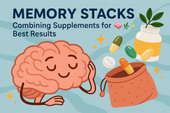
Memory Stacks: Combining Supplements for Best Results
Memory weaves the story of who we are — connecting past, present, and future through every experience we store and recall. Strengthening memory means nurturing the brain’s energy, balance, and emotional calm so learning becomes effortless. 🌿🧠
-
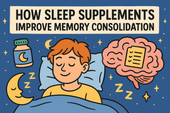
How Sleep Supplements Improve Memory Consolidation
Stress can cloud thinking, disrupt sleep, and weaken memory — but understanding its effects on the brain is the first step toward calm. By learning to regulate the nervous system, we can protect focus, energy, and emotional balance. 🌿🧠
-
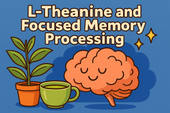
L-Theanine and Focused Memory Processing
Science is the art of curiosity and precision — a quest to understand the unseen patterns that shape life. From molecules to galaxies, every discovery begins with observation, imagination, and the courage to ask “why.” 🔬💡
-
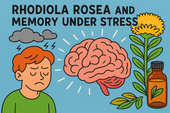
Rhodiola Rosea and Memory Under Stress
Stress clouds memory, slows thinking, and drains energy — but the good news is, the brain can recover. By understanding how stress affects focus and emotion, we can learn to regulate it, restore clarity, and protect long-term cognitive health. 🌿🧠
-
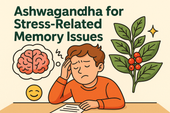
Ashwagandha for Stress-Related Memory Issues
Adaptogens are nature’s answer to modern stress. These powerful herbs — like Ashwagandha, Rhodiola, and Holy Basil — help balance cortisol, support calm focus, and strengthen the body’s resilience, bringing the mind back to harmony. 🌿🧘♀️


















































